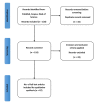Adaptive Neuroplasticity in Brain Injury Recovery: Strategies and Insights
- PMID: 37885532
- PMCID: PMC10598326
- DOI: 10.7759/cureus.45873
Adaptive Neuroplasticity in Brain Injury Recovery: Strategies and Insights
Abstract
This review addresses the relationship between neuroplasticity and recovery from brain damage. Neuroplasticity's ability to adapt becomes crucial since brain injuries frequently result in severe impairments. We begin by describing the fundamentals of neuroplasticity and how it relates to rehabilitation. Examining different forms of brain injuries and their neurological effects highlights the complex difficulties in rehabilitation. By revealing cellular processes, we shed light on synaptic adaptability following damage. Our study of synaptic plasticity digs into axonal sprouting, dendritic remodeling, and the balance of long-term potentiation. These processes depict neural resilience amid change. Then, after damage, we investigate immediate and slow neuroplastic alterations, separating reorganizations that are adaptive from those that are maladaptive. As we go on to rehabilitation, we evaluate techniques that use neuroplasticity's potential. These methods take advantage of the brain's plasticity for healing, from virtual reality and brain-computer interfaces to constraint-induced movement therapy. Ethics and individualized neurorehabilitation are explored. We scrutinize the promise of combination therapy and the difficulties in putting new knowledge into clinical practice. In conclusion, this analysis highlights neuroplasticity's critical role in brain injury recovery, providing sophisticated approaches to improve life after damage.
Keywords: brain injury; brain-computer interfaces; cognitive rehabilitation; motor skill regeneration; neural recovery; neuroplasticity; personalized neurorehabilitation; rehabilitation strategies; sensory recovery; virtual reality-based rehabilitation.
Copyright © 2023, Zotey et al.
Conflict of interest statement
The authors have declared that no competing interests exist.
Figures
References
-
- Principles of experience-dependent neural plasticity: implications for rehabilitation after brain damage. Kleim JA, Jones TA. J Speech Lang Hear Res. 2008;51:225–239. - PubMed
-
- Brain plasticity as a basis for recovery of function in humans. Bach-y-Rita P. Neuropsychologia. 1990;28:547–554. - PubMed
-
- Diagnosis, prognosis, and clinical management of mild traumatic brain injury. Levin HS, Diaz-Arrastia RR. Lancet Neurol. 2015;14:506–517. - PubMed
-
- Repairing the human brain after stroke: I. Mechanisms of spontaneous recovery. Cramer SC. Ann Neurol. 2008;63:272–287. - PubMed
Publication types
LinkOut - more resources
Full Text Sources
Research Materials

